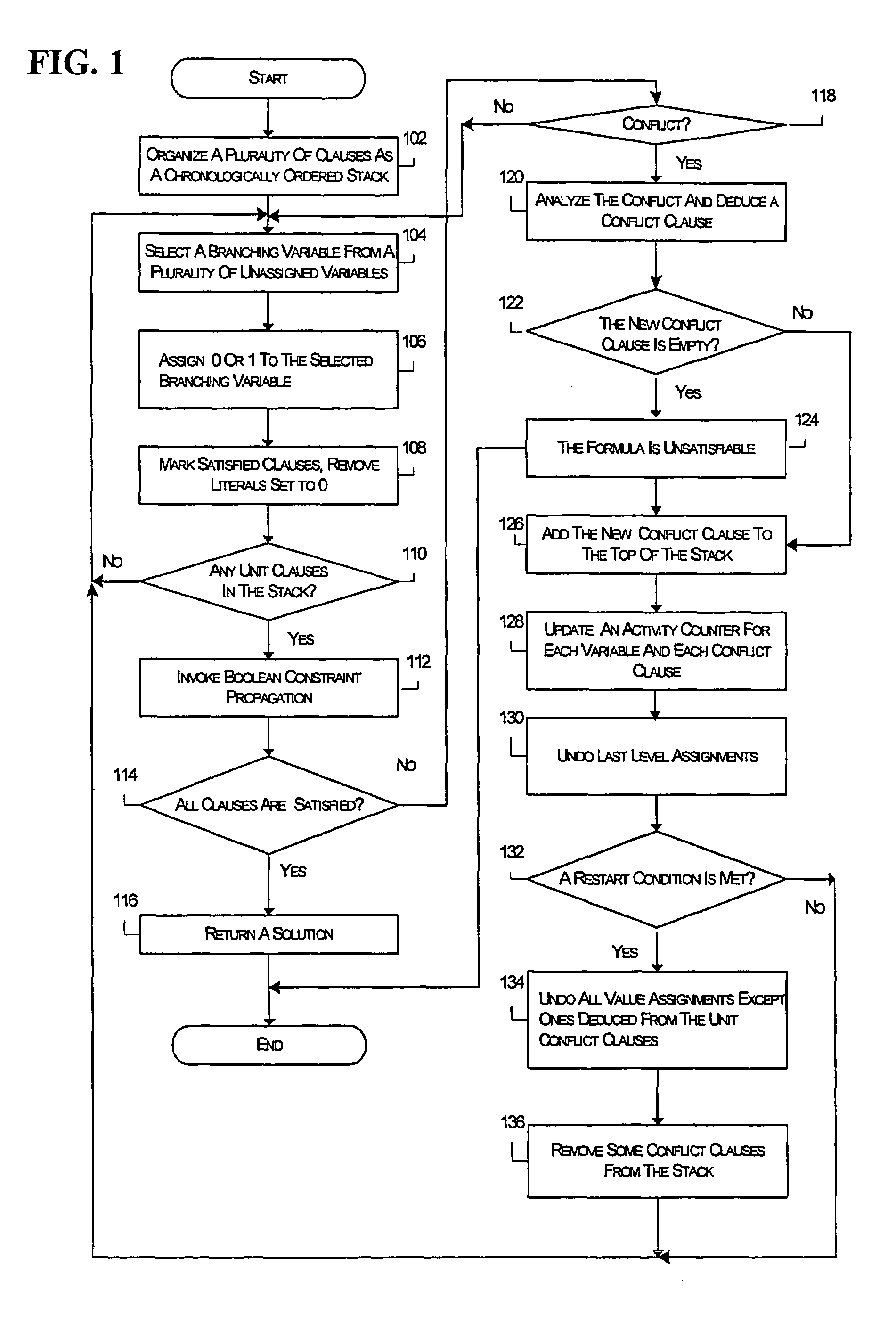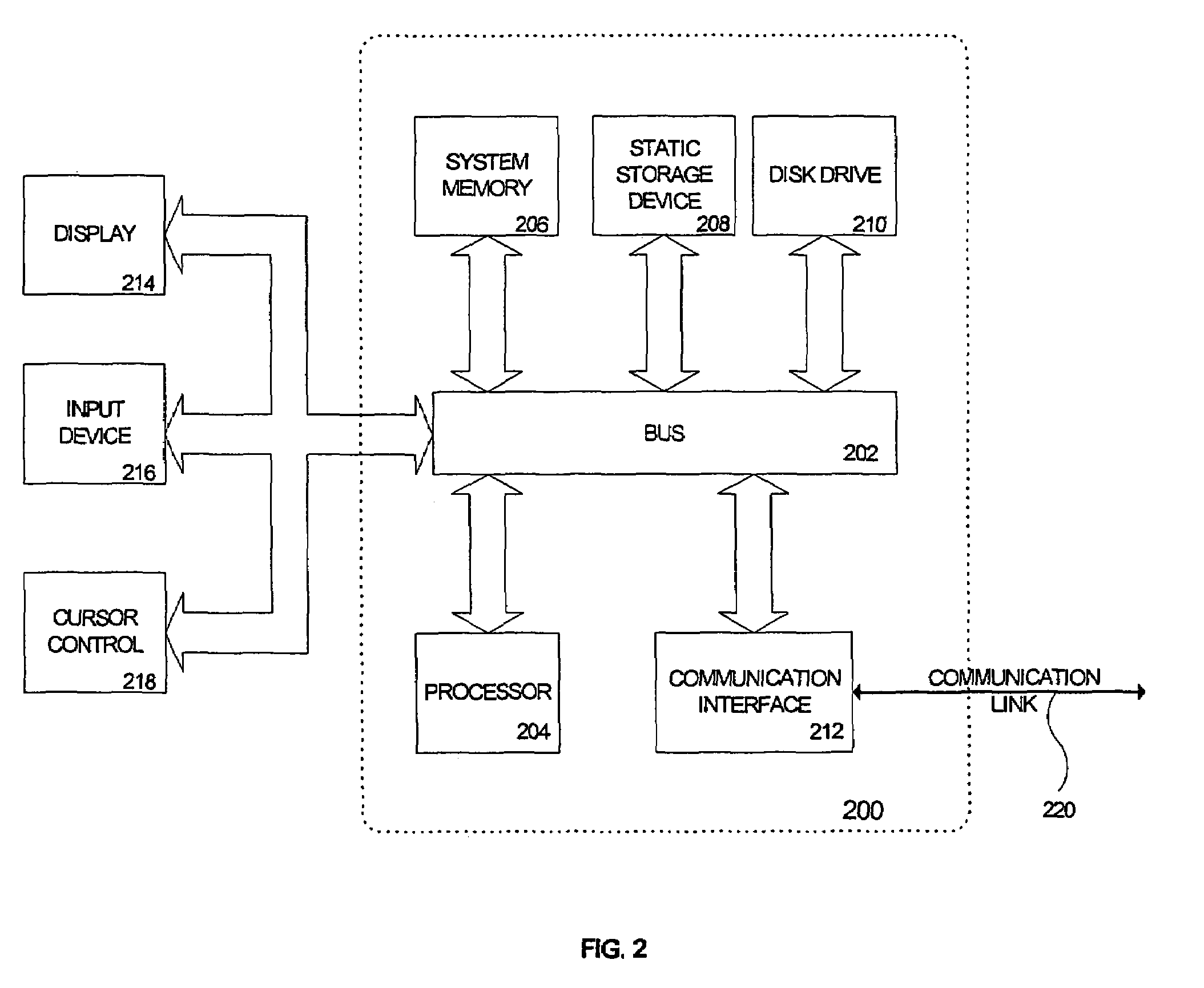Method and system for solving satisfiability problems
a technology of satisfactory problems and methods, applied in the field of satisfactory problems, can solve the problems of poor performance, inability to solve the problem of another sat-solver, and inability to solve the problem of sat-solvers robust, etc., and achieve the effects of improving performance, poor performance, and lack of robustness
- Summary
- Abstract
- Description
- Claims
- Application Information
AI Technical Summary
Problems solved by technology
Method used
Image
Examples
Embodiment Construction
[0018]Illustrated in FIG. 1 is a method of solving satisfiability problems according to an embodiment of the invention. At 102, a plurality of clauses of the original CNF formula are organized as a chronologically ordered stack. The stack has a top and a bottom and may include both initial and conflict clauses. Initial clauses are clauses of the original CNF formula. In some embodiments, the initial clauses are on the bottom of the stack and newly deduced conflict clauses are added to the top of the stack.
[0019]A branching variable is selected from a plurality of unassigned variables of the current CNF formula at 104. In one embodiment, when the clause on top of the stack is a conflict clause, the branching variable is selected from among a set of unassigned variables in the top clause rather than from among all of the unassigned variables of the current CNF formula.
[0020]At 106, a value of one or zero is assigned to the selected branching variable. In deciding whether to assign one...
PUM
 Login to View More
Login to View More Abstract
Description
Claims
Application Information
 Login to View More
Login to View More - R&D
- Intellectual Property
- Life Sciences
- Materials
- Tech Scout
- Unparalleled Data Quality
- Higher Quality Content
- 60% Fewer Hallucinations
Browse by: Latest US Patents, China's latest patents, Technical Efficacy Thesaurus, Application Domain, Technology Topic, Popular Technical Reports.
© 2025 PatSnap. All rights reserved.Legal|Privacy policy|Modern Slavery Act Transparency Statement|Sitemap|About US| Contact US: help@patsnap.com



